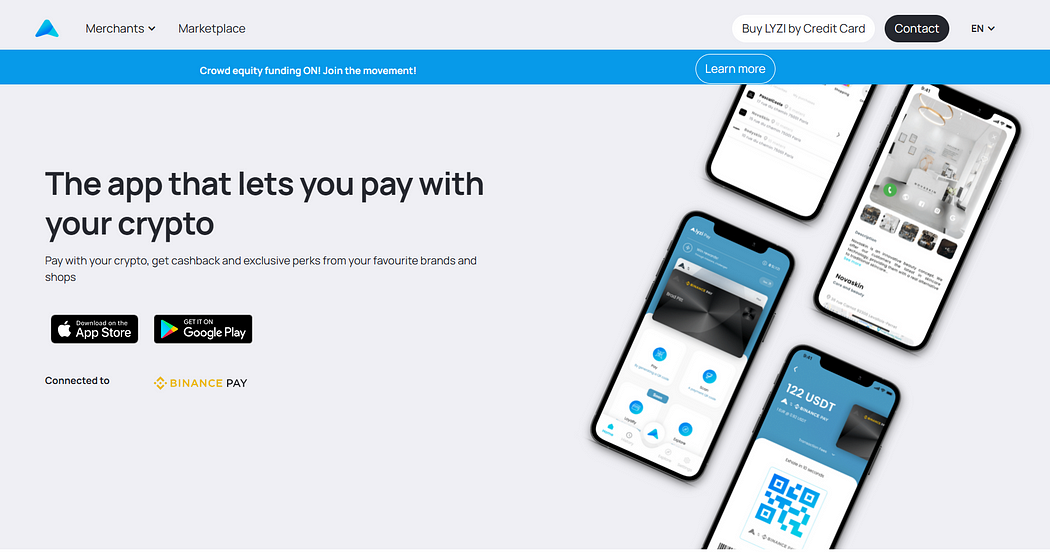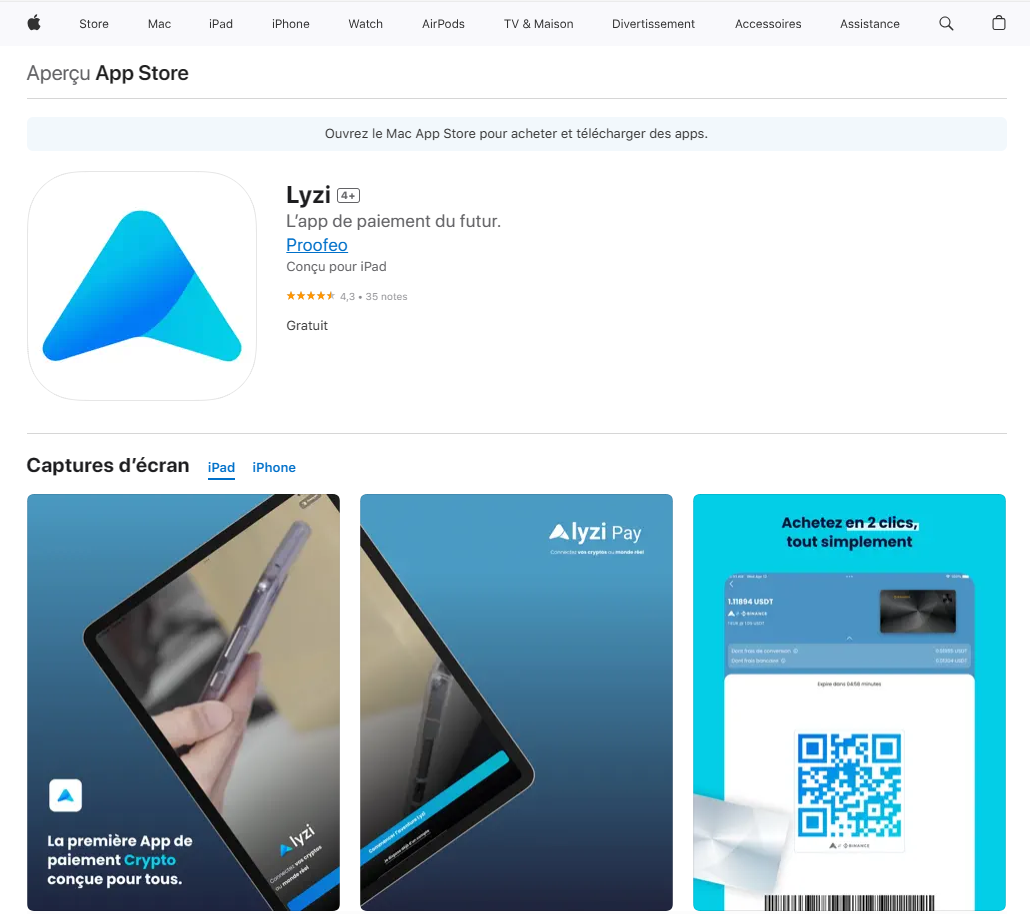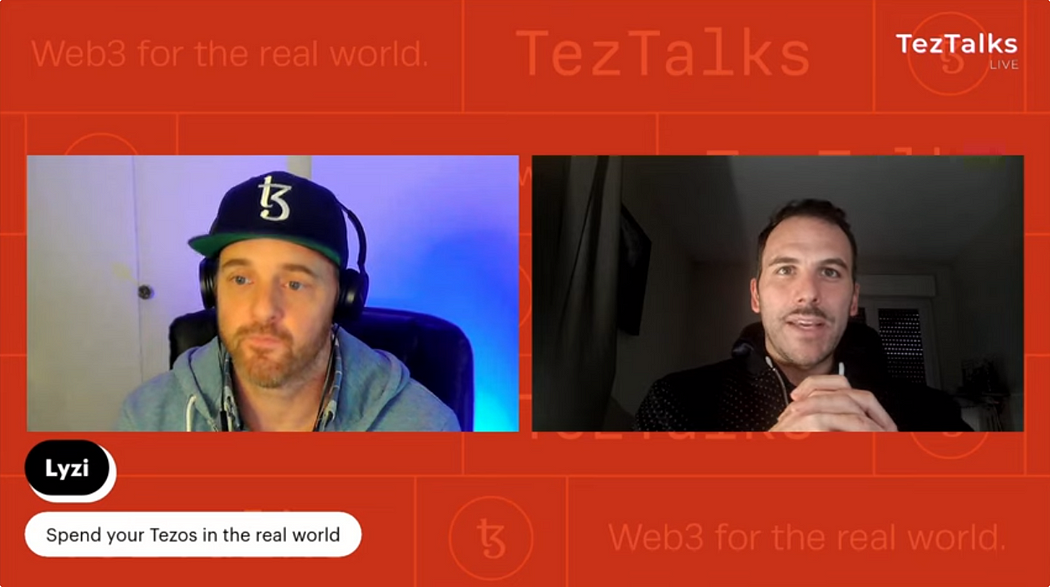Tezos Goes Shopping: Exploring Crypto Payment Platform Lyzi With Damien Patureaux
Damien Patureaux, CEO and Co-Founder of Lyzi on how this Tezos-powered crypto payment platform is progressing in 2024.
Originally published at Tezos Commons News
1,600 words, 8 minute read

Talk to anyone who isn’t already embedded in the world of cryptocurrency and blockchain technology about this space, and it’s a pretty safe bet that the question “but what can you do with it?” will come up within the first ten minutes.
Answering this pesky question without explaining the ongoing shift toward an increasingly digital world, the enormous part Web3 will play in that shift, and the massive impact this shift will have (and is already having) on our everyday lives, has been a tall task in the best of times.
As armies of creators, builders, founders, and developers continue bolstering the infrastructure of the larger blockchain ecosystem, smoothing out its speed bumps, and releasing evermore accessible/useful tools and applications, however, such questions can be expected to fall by the wayside one by one in the months and years ahead.
When it comes to making cryptocurrency a sustainably viable alternative to fiat currencies and crushing the “but what can you do with it” narrative forever, however, there is one problematic bottleneck in the system that stands out from all the others: the problem of enabling those who hold crypto to spend it in the real world.
Cryptocurrency was originally envisioned as an alternative to traditional or “fiat” currencies. The need to utilize cumbersome off-ramping processes to spend cryptocurrency has held these promising technologies back from reaching their promise and given detractors far too easy a target to point at when deriding their utility.
Enter Lyzi.

While many retail crypto payment platforms have been rolled out across the larger blockchain space to varying degrees of success, none have yet managed to make paying for real-world purchases with cryptocurrency truly viable. Cracking this seemingly simple but extremely complex problem, has confounded the sharpest minds in the blockchain sphere for some years now.
But, according to Lyzi CEO and Co-Founder Damien Patureaux, a practical solution is not only in the works but already up and running in Western Europe…
“Lyzi is a crypto payment hub connecting brands with Web 3.0 users who hold crypto on a fully-regulated platform. We are mainly based in France because this is where we are from and this is where everything began for Lyzi, but we are currently developing and accelerating in other countries in Europe.”
Built right here in the Tezos ecosystem, the Lyzi team has been hard at work building connections with France’s largest retail entities and brands to help them offer seamless crypto transactions to the masses on a fully regulated and secure crypto spending platform.
Available on both The App Store and Google Play, the Lyzi app offers users seamless retail purchases directly through their cryptocurrency wallets. It is enabled to transact using more than 70 cryptocurrencies and is currently accepted by 1500+ brands worldwide.
Damien Patureaux says that the Lyzi team’s decision to realize their vision in the Tezos ecosystem was one made thoughtfully, and with a couple of very important factors in mind…
“When you talk about the payments use case, it’s the start of pretty much everything. When you read the Bitcoin whitepaper, the only thing is peer-to-peer payment. This is what it should be. What’s important for us, because we’re dealing with real people in real life, is to have technology that will be as scalable as possible and as cheap as possible.
Payments are so challenging. With tap-and-pay on your cell phone, these things take just a second. It’s really challenging to build something that works that easily for the end user and for the brand. In order to do so, we need to have the best technology, and we believe that Tezos has strong technology that is fully decentralized. The second thing that is very important is that in Europe, Tezos is powerful as a corporate ecosystem. That was very important in getting brands and gaining traction with big European corporations. They know they need a plug-and-play product like ours, and with Tezos, the story they need to hear to get involved is very easy to write.
Those are the two main reasons we picked the Tezos blockchain, but of course Tezos was also the first blockchain that showed a lot of confidence in our product and helped us develop it.”
In its quest to grow Lyzi’s adoption in the region, however, writing a great story that brands and retailers can get on board with is only part of the journey. Driving adoption of the Lyzi app and getting consumers involved is equally important — if not more so. To that end, the Lyzi team has included a robust incentive structure for users willing to use Lyzi for their retail purchases driven by their “Lyzi Token” something Damien spoke about during his recent appearance on TezTalks Live…

Damien Patureaux says that the Lyzi team’s decision to realize their vision in the Tezos ecosystem was one made thoughtfully, and with a couple of very important factors in mind…
“When you talk about the payments use case, it’s the start of pretty much everything. When you read the Bitcoin whitepaper, the only thing is peer-to-peer payment. This is what it should be. What’s important for us, because we’re dealing with real people in real life, is to have technology that will be as scalable as possible and as cheap as possible.
Payments are so challenging. With tap-and-pay on your cell phone, these things take just a second. It’s really challenging to build something that works that easily for the end user and for the brand. In order to do so, we need to have the best technology, and we believe that Tezos has strong technology that is fully decentralized. The second thing that is very important is that in Europe, Tezos is powerful as a corporate ecosystem. That was very important in getting brands and gaining traction with big European corporations. They know they need a plug-and-play product like ours, and with Tezos, the story they need to hear to get involved is very easy to write.
Those are the two main reasons we picked the Tezos blockchain, but of course Tezos was also the first blockchain that showed a lot of confidence in our product and helped us develop it.”
In its quest to grow Lyzi’s adoption in the region, however, writing a great story that brands and retailers can get on board with is only part of the journey. Driving adoption of the Lyzi app and getting consumers involved is equally important — if not more so. To that end, the Lyzi team has included a robust incentive structure for users willing to use Lyzi for their retail purchases driven by their “Lyzi Token” something Damien spoke about during his recent appearance on TezTalks Live…

“The Lyzi Token has different utilities and use cases. Many of these are based on bringing more users to the platform through cash back incentives. When you make a purchase using Lyzi, you get cash back in the form of Lyzi tokens. It’s also used for loyalty incentives. What’s important for us is to generate usage, because brands are looking for usage.
Our mission is to drive adoption, and to drive adoption you need to find the right way to incentivize people to use the platform. The token can be used for retail purchases, but it can be used for DeFi as well, just as one example. It has many different utilities.”
With all of this in place, the Lyzi team has managed to make significant headway in several Western European markets. However, their vision for Lyzi’s rollout is a much larger one. While European countries like France, Belgium, and Spain are important markets and effective proving grounds for Lyzi’s technology and go-to-market strategy, only a truly global plan for driving adoption will truly allow Lyzi to reach its tremendous promise…
“In one year we have signed more than 1,000 shops that now accept crypto payments in France, Belgium, and Spain. That’s without making a lot of business development effort. We were mainly focused on indirect integrations based on PSPs and POS system integrations because those are keys in the model we are building. When you go and see a Target Center in the US, for example, and you want to deploy crypto payments in their legacy cashier system, you have to be integrated before even talking to them.
The strategy for us is to push towards all those types of integrations to make it as easy as possible when we deal with them. When we go see a brand, we are already integrated with their POS system or hardware payment terminal. That makes it a lot easier when we deal with their IT. It’s just plug-and-play. You activate the toggle, we do the KYC, and that’s it, it’s done. You can accept crypto payments.
The next step is to build something more global. We are mainly based in the European market — mainly France, Belgium, and Spain, but we want to expand worldwide.”
As the Tezos ecosystem continues its relentless march toward mass adoption, finding effective bridges between cryptocurrency value and the real-world markets where that value can be put to use will be an increasingly crucial endeavor. And, with folks like Damien Patureaux and the Lyzi team leading the global charge, it’s good to know that the Tezos ecosystem has claimed a spot on the bleeding edge of this crucial task, just as it has with so many others. We’ll be keeping a close eye on Lyzi’s journey toward global adoption, and can’t wait to see where all of this leads!